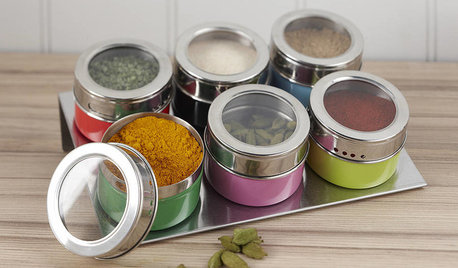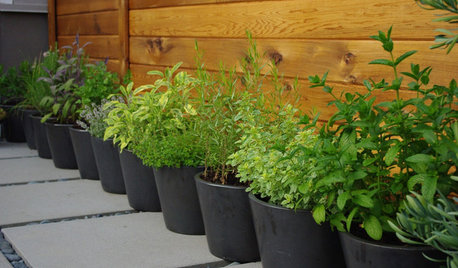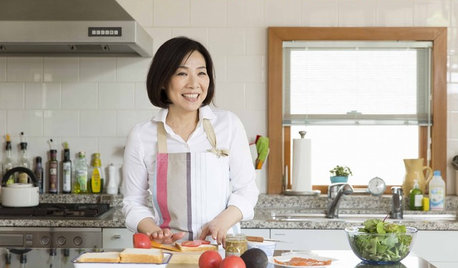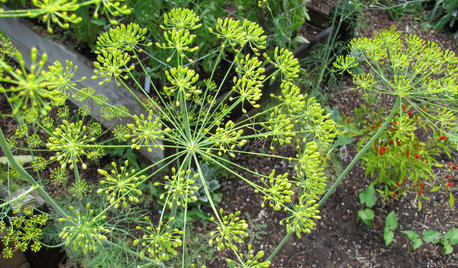Pinching coriander
neptune25
13 years ago
Related Stories

PRODUCT PICKSGuest Picks: Spice Up Your Spice Rack
The right spice rack adds a pinch of style and a dash of functionality to any cook's kitchen
Full Story
GARDENING GUIDES4 Herb Container Gardens for Fabulous Global Cuisine
Tingle your taste buds with the unbeatable taste of fresh herbs in your Italian, Asian, Mexican or French fare
Full Story
CONTAINER GARDENS8 Easy Container Plants to Grow From Seed
Get beautiful blooms and herbs in summer by starting these choice garden picks from seed in spring
Full Story
KITCHEN DESIGNWorld of Design: Favorite Recipes From Food Lovers Around the Globe
Travel with your tastebuds and experience for yourself these international foodies' favorite dishes
Full Story
EDIBLE GARDENSHerb Garden Essentials: Grow Your Own Tasty, Frilly Dill
Flavor your food and attract butterflies with easy-care (and pretty) dill in the garden
Full Story









fatamorgana2121
sconnielill
Related Professionals
Benbrook Landscape Architects & Landscape Designers · Fort Lee Landscape Architects & Landscape Designers · Quincy Landscape Architects & Landscape Designers · Summit Landscape Architects & Landscape Designers · Gainesville Landscape Contractors · Waterbury Landscape Contractors · Deerfield Landscape Contractors · Euclid Landscape Contractors · Pleasant Grove Landscape Contractors · Ridgewood Landscape Contractors · Saint Paul Landscape Contractors · Philadelphia Roofing & Gutters · Phoenix Roofing & Gutters · Cincinnati Roofing & Gutters · Ponte Vedra Beach Roofing & GuttersDaisyduckworth
neptune25Original Author
Daisyduckworth
neptune25Original Author
sconnielill
neptune25Original Author
biscgolf
neptune25Original Author